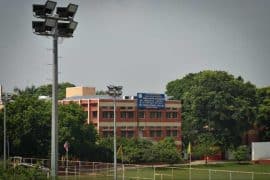As people come out on the streets every day to protest the draconian and unconstitutional laws of the government, an ode to the women who are the centre of revolution in our city.
The air is different here, Shaheen Bagh’s corners and roads echo with the cries of azadi and inquilab zindabad. A walk through Shaheen Bagh shows many things, toddlers and small children chanting azadi, a mother sitting who wants her baby’s first word to be azadi, songs of resistance playing over the speaker. With dissent and revolution in the air, one question becomes evident. How did this start and what is the significance?
The indefinite sit-in began the day after the Delhi Police entered Jamia Millia Islamia (JMI) and brutally unleashed violence on peacefully protesting students, even attacking those who were just in their hostels or the Central Library. What began as 10-15 women sitting and indefinitely protesting against the unconstitutional and Islamophobic CAA-NRC-NPR has now catalysed into a much larger protest site. The entire street has become a space for dissent in many forms, with speakers, singers, and artists all doing everything, a roadside library for people to study and read in, medical have all come up to help these brave women . Shaheen Bagh has also served as a model for many other similar indefinite sit-in protests, all led by brave women who have left everything behind to protest against fascism. Seelampur Jaffrabad, Inderlok Metro Station, Khureji, Hauz Rani, Ghantaghar in Lucknow and many other similar protest sights coming up all over the country to protest.
The women of Shaheen Bagh and other such protests have come to symbolise so much in these dark times. In a country where gender roles and stereotypes have a large and pervasive role, Shaheen Bagh also stands a symbol fighting these unjust stereotypes. These stereotypes have been seen in several protests, an example being the Anti-CAA rally held in Lucknow on the 19th of December, where women were told to stand away from the main protesting crowd, and not allowed to go into the centre of the protest by their male counterparts and were told that “beech mai mat aaye, ye safe nahi hai” ( don’t come in between, it’s not safe).
The women of Shaheen Bagh and women throughout history, along with fighting the injustices of the time have smashed the patriarchal stereotypes which depict women as frail and weak. The strength shown by these women is an inspiration for all those who are protesting and dissenting against the Government and its policies. In these times of brutality and suppression, these women have done the bravest thing they could do, stand up and speak, and the entire country is listening.
Feature Image Credits: Manav Ahuja and Jassman for DU Beat
Prabhanu Kumar Das





Comments are closed.